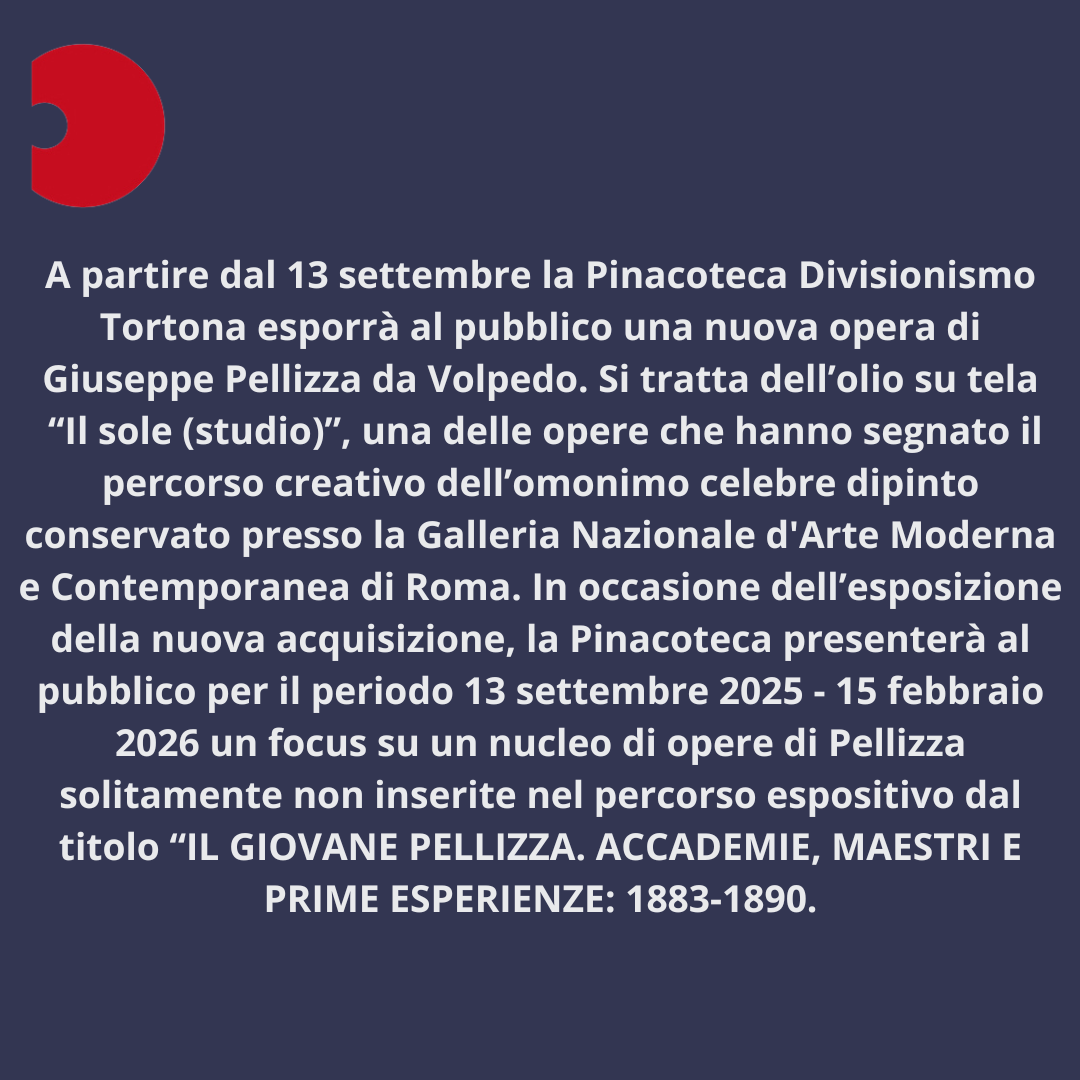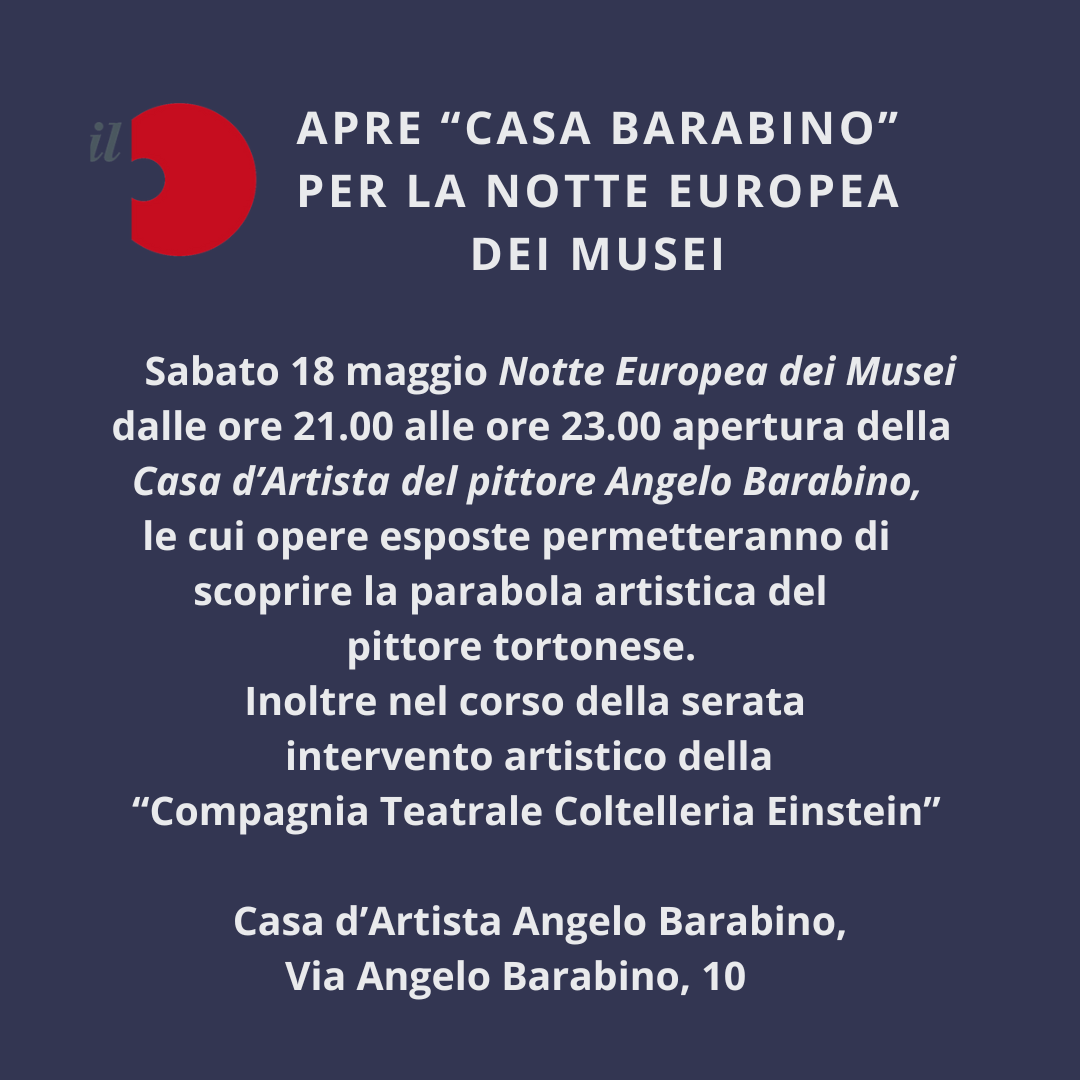It was 1999 when the Foundation Cassa di Risparmio of Tortona decided to acquire the core of works resulting from the far-sighted collecting activities of the banking institution from which it originated.
Shortly thereafter, the idea was born to undertake a project to enhance and increase the value of this artistic heritage that had until then favoured a special relationship with its territory and particularly with its most significant artists.
An art past marked by the genius loci Giuseppe Pellizza da Volpedo, a major figure in the painting culture of the Lombardy-Piedmont area, which has become the collection’s privileged target because it was there, between Milan and Turin, that the so-called “first debate” of divisionism took place, starting with the First Brera Triennale in 1891.
Beginning in 2001, when the Art Gallery was opened to the public, in the span of a few years ” Pinacoteca Divisionismo Tortona” came to life, as a permanent exhibition aiming to document this essential artistic season through the variety and originality of pictorial languages, not only used by the great Divisionist masters but also by personalities who gave voice to rather peripheral cultures, which for a long time were not properly valued, but nevertheless worthy of attention.
The thread of the Art Gallery thus unravels around the fruitful dialogue and confrontation between the different interpreters of a bold, anti-academic technique that was able to represent the instances of a new century: from the socially engaged artists of the 1890s to the empirical approaches in the Symbolist sphere and the early essays of the represenatives of the Futurist revolution for whom the division of color subtended the language of modernity.
Currently the Art Gallery covers an area of 750 square meters and consists of 145 works that document the activities of more than 59 artists.
Masterpieces, such as The path of Workers and The bridge by Giuseppe Pellizza, an artist whose work the Art Gallery holds the largest exposure that can be enjoyed in a public showroom, The shepherd’s income by Giovanni Segantini, The doorwoman by Medardo Rosso, Piazza Caricamento,Genoa by Plinio Nomellini, I remember when I was a girl and The last moves by Angelo Morbelli, Pasture by Carlo Fornara, The fruit seller and The stars by Emilio Longoni, Dim lights by Gaetano Previati, Self- portrait by Gino Severini, Portrait of Armando Mazza by Umberto Boccioni, and Failure by Giacomo Balla, are linked and compared with works of remarkable technical and expressive originality by lesser-known artists, but who demonstrated a strong vitality in adhering to the scientific principles of divided painting.
The Foundation’s great efforts in recent years in the growing up of the Art Gallery have succeeded in its former intent of defining its physiognomy as an unavoidable point of reference for the study of Divisionism, which is not as well and minutely represented in any other museum collection.
A cultural project that is able to dialogue with the most important and well-known museum institutions, and which represents, in synergy with the Pellizziani Museums in Volpedo, an important knot in a cultural network that, as in other countries in the Western world, has been making the whole territory grow and give a sign of how one can do cultural promotion work with attention to the events that have outlined the peculiarity of a necessarily plural and widespread artistic production.
 https://ildivisionismo.it/wp-content/uploads/2025/09/Copia-di-Riapertura-Pinacoteca-1-1.png
1080
1080
admin
https://www.ildivisionismo.it/wp-content/uploads/2019/01/il-Divisionismo-LOGHI-3-300x92.jpg
admin2025-09-12 13:10:192025-09-12 13:16:35Giuseppe Pellizza da Volpedo: una nuova acquisizione e un focus sulle sue opere giovanili
https://ildivisionismo.it/wp-content/uploads/2025/09/Copia-di-Riapertura-Pinacoteca-1-1.png
1080
1080
admin
https://www.ildivisionismo.it/wp-content/uploads/2019/01/il-Divisionismo-LOGHI-3-300x92.jpg
admin2025-09-12 13:10:192025-09-12 13:16:35Giuseppe Pellizza da Volpedo: una nuova acquisizione e un focus sulle sue opere giovanili

